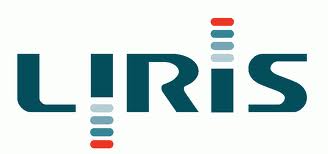Laëtitia Matignon


Research |
|
My interests are in Artificial Intelligence (AI), and especially (deep) reinforcement learning and developmental learning and their applications to robotics (mono-robot, multi-robot and human-robot systems). More specifically, I'm interested in decisional interactions in multi-agent systems composed of a set of artificial agents and composed of artificial and human agents. |
PhD/Master StudentsCurrent Students
Previous Students
Master Students
Deep Reinforcement Learning applied to active perception of a fleet of mobile robots. Distributed architecture and man-machine interface for the control of a fleet of mobile robots Multi-Robot navigation and cooperative mapping in a circular topology. Study of the expressivity of neural networks from a constructivist perspective: application to automatic text generation. Self-adaptative software in Smart Environments using multi-agent based learning. Learning of hierarchic behaviors: a comparative study between developmental and reinforcement learning. Anytime algorithms for the exploration and observation of a complex scene by a mobile multi-agent system Visualisation tools for the construction of representation in developpemental learning: application to reinforcement learning Spatial coordination and communication in a robot fleet to optimize the observation of a scene Implementation of mono and multi-robot exploration strategies with ROS Multi-Robot ExplorationDistributed Value Functions for Multi-Robot ExplorationThis work is made in collaboration with Laurent Jeanpierre and A.I. MouaddibWe performed experiments with our two micro-troopers. Here are some videos showing the exploration of the robots and how they spread out to different areas so as to cover the space efficiently and to minimize close interactions. Some situations of local coordination successfully resolved are also shown. These videos can be also viewed in low quality on this site: (click here) The video of our ROBOTS_MALINS consortium for the 2nd year of the CAROTTE challenge: (click here to see the video) Human-Robot InteractionA Model for Verbal and Non-Verbal Human-Robot CollaborationThis work is made in collaboration with A.B. Karami and A.I. Mouaddib We are motivated by building a system for an
autonomous robot companion that collaborates with a human
partner for achieving a common mission. The objective of the
robot is to infer the human's preferences upon the tasks of
the mission so as to collaborate with the human by achieving
human's non-favorite tasks. Inspired by recent researches about
the recognition of human's intention, we propose a unified
model that allows the robot to switch accurately between verbal
and non-verbal interactions. Our system unifies an epistemic
partially observable Markov decision process (POMDP) that is
a human-robot spoken dialog system aiming at disambiguating
the human's preferences and an intuitive human-robot collaboration
consisting in inferring human's intention based on the
observed human actions. The beliefs over human's preferences
computed during the dialog are then reinforced in the course
of the task execution by the intuitive interaction. Our unified
model helps the robot inferring the human's preferences and
deciding which tasks to perform to effectively satisfy these
preferences. The robot is also able to adjust its plan rapidly in
case of sudden changes in the human's preferences and to switch
between both kind of interactions. Experimental results on a
scenario inspired from robocup@home outline various specific
behaviors of the robot during the collaborative mission.
Experimental resultsThe video (click here to see the video) shows the execution of a complete mission composed of 4 tasks following a policy computed with the approximate POMDP solver Topological Order Planner (TOP) (Dibangoye et al. 2009). The experiment uses a mobile koala robot. In order to be able to realize the verbal communication between the robot and the human, we integrated a speech recognition module for the robot to interpret the human speech utterances; and a speech synthesizer for the robot to convert its queries into speech. Audio observations are processed using the Sphinx-4 opensource speech recognition system (Walker et al. 2004) and the FreeTTS open-source speech synthesizer was used for the text-to-speech conversion (Walker et al. 2002).
The table shows the dialog between the human and the robot illustrated in the video. Various switches between verbal and non-verbal
interactions and specific behaviors of the robot during the collaboration are outlined.
BibliographyDibangoye, J. S.; Shani, G.; Chaib-draa, B.; and Mouaddib, A.-I. 2009. Topological order planner for pomdps. In IJCAI -09, 1684-1689 W. Walker, P. Lamere, P. Kwok, B. Raj, R. Singh, E. Gouvea, P. Wolf, and J. Woelfel, "Sphinx-4: A flexible open source framework for speech recognition", Tech. Rep., 2004. W. Walker, P. Lamere, and P. Kwok, "Freetts - a performance case study", Tech. Rep. TR-2002-114, 2002. |

